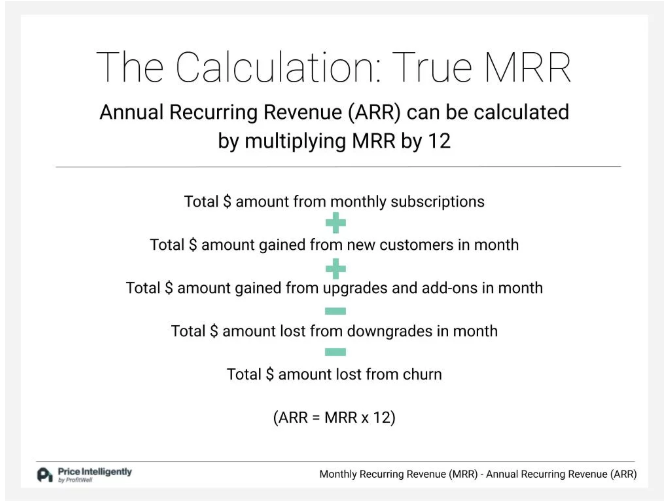
Based on the below information, you are required to calculate the accounting rate of return, assuming a 20% tax rate. For those new to ARR or who want to refresh their memory, we have created a short video which cover the calculation of ARR and considerations when making ARR calculations. The company may accept a new investment if its ARR higher than a certain level, usually known as the hurdle rate which already approved by top management and shareholders. It aims to ensure that new projects will increase shareholders’ wealth for sustainable growth.
- The operating expenses of the equipment other than depreciation would be $3,000 per year.
- Find out everything you need to know about the Accounting Rate of Return formula and how to calculate ARR, right here.
- If an old asset is replaced with a new one, the amount of initial investment would be reduced by any proceeds realized from the sale of old equipment.
- Another variation of ARR formula uses initial investment instead of average investment.
Performance benchmark
The operating expenses of the equipment other than depreciation would be $3,000 per year. This is a solid tool for evaluating financial performance and it can be applied across multiple industries and businesses that take on projects with varying degrees of risk. The accounting rate of return (ARR) is an indicator of the performance or profitability of an investment. The denominator in the formula is the amount of investment initially required to purchase the asset. If an old asset is replaced with a new one, the amount of initial investment would be reduced by any proceeds realized from the sale of old equipment.
Depreciation method
Finance Strategists is a leading financial education organization that connects people with financial professionals, priding itself on providing accurate and reliable financial information to millions of readers each year. Our team of reviewers are established professionals with decades of experience in areas of personal finance and hold many advanced degrees and certifications. For information pertaining to the registration status of 11 Financial, please contact the state securities regulators for those states in which 11 Financial maintains a registration filing.
Accounting Rate of Return Formula & Calculation (Step by Step)
The new machine will cost them around $5,200,000, and by investing in this, it would increase their annual revenue or annual sales by $900,000. Specialized staff would be required whose estimated wages would be $300,000 annually. The estimated life of the machine is of 15 years, and it shall have a $500,000 salvage value. Depreciation is a direct cost that reduces the value of an asset or profit of a company.
The Accounting Rate of Return (ARR) Calculator uses several accounting formulas to provide visability of how each financial figure is calculated. Each formula used to calculate the accounting rate of return is now illustrated within the ARR calculator and each step or the calculations displayed so you can assess and compare against your own manual calculations. The accounting rate of return (ARR) is a formula that shows the percentage rate of return that is expected on an asset or investment. This is when it is compared to the initial average capital cost of the investment. If you’re making a long-term investment in an asset or project, it’s important to keep a close eye on your plans and budgets. Accounting Rate of Return (ARR) is one of the best ways to calculate the potential profitability of an investment, making it an effective means of determining which capital asset or long-term project to invest in.

11 Financial may only transact business in those states in which it is registered, or qualifies for an exemption or exclusion from registration requirements. 11 Financial’s website is limited to the dissemination of general information pertaining to its advisory services, together with access to additional investment-related information, publications, and links. For example, you invest 1,000 dollars for a big company and 20 days later you get 300 dollars as revenue. Accounting Rate of Return is calculated by taking the beginning book value and ending book value and dividing it by the beginning book value. The Accounting Rate of Return is also sometimes referred to as the “Internal Rate of Return” (IRR).
The company needs to decide whether or not to make a new investment such as purchasing an asset by comparing its cost and profit. The accounting rate of return (ARR) is a simple formula that allows investors and managers to determine the profitability of an asset or project. Because of its ease of use and determination of profitability, it is a handy tool to compare the profitability of various projects. However, the average monthly bookkeeping fees formula does not consider the cash flows of an investment or project or the overall timeline of return, which determines the entire value of an investment or project. Average accounting profit is the arithmetic mean of accounting income expected to be earned during each year of the project’s life time. Average investment may be calculated as the sum of the beginning and ending book value of the project divided by 2.
Average Annual Profit is the total annual profit of the projects divided by the project terms, it is allowed to deduct the depreciation expense. Of course, that doesn’t mean too much on its own, so here’s how to put that into practice and actually work out the profitability of your investments. To calculate ARR, you take the net income, then divide by initial investment. The project looks like it is worth pursuing, assuming that the projected revenues and costs are realistic. An example of an ARR calculation is shown below for a project with an investment of £2 million and a total profit of £1,350,000 over the five years of the project. For a project to have a good ARR, then it must be greater than or equal to the required rate of return.